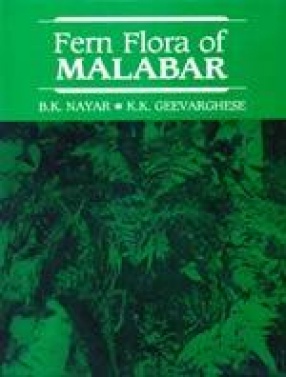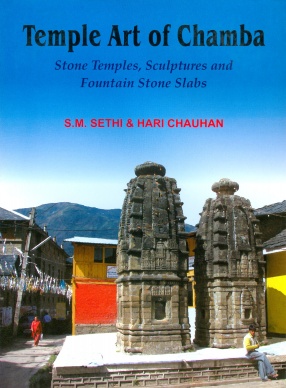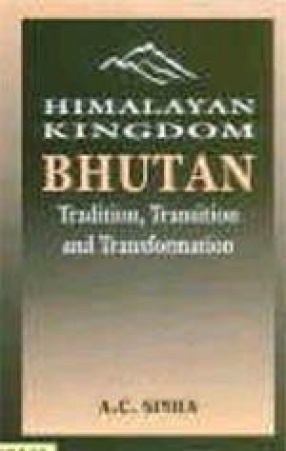
Indus Publishing Company

117 books













Globalisation has become a vivid reality with its ever encompassing reach in every sphere of human existence. It has become a hallmark of contemporary communities across the world. Despite such gigantic dimensions, the majority of the mountainous regions viz. the Himalayas seem to have remained outside the ‘mainstream culture’.
This book, the outcome of an International Conference on ‘Globalisation and Cultural Practices in Mountain Areas: ...


The Himalayas are the highest, the loftiest and the most fragile ecosystem on the Earth. As they accumulate the largest mass of snow and ice outside the North and South Poles, it is often referred to as the Third Pole. The Third Pole, apart from influencing global weather system, also contributes to cooling the planet Earth. Climate change exhibiting the rising temperature to an alarming extent is posing a threat not only to the Himalayas but also to the plain ...

Situated in the tarai belt between the Yamuna and Ganga rivers in the fertile plains of north India, Saharanpur and its adjoining areas have been defined as the Doab region. The ancient Jain temples and some of the ancient Jain havelis in this Doab belt are lavishly built with the ornamental wood and stone works, and profusely painted with wall paintings and floral work.

The author's first book High Himalaya Unknown Valleys covered his explorations of the Indian Himalaya between 1969 and 1991. Its success emphasised that more information was required as the interest is generated in the smaller mountains and unknown valleys. The present book continues in a similar vein. It covers expeditions and treks undertaken by the author between 1993 and 1997. It includes other writings and those lovely treks he had also done before 1969. ...

Stretching from the great bend of the Indus River in the north-west to the bend of the Brahmaputra river in the east, the Himalayan Mountain chain is the world's most magnificent Physical feature on the Face of the earth.The Himalayan mountain chain is made up of countless peaks, valleys, rivers, streams, lakes, and glaciers. Some of the most important Rivers of Southeast Asia drain the Himalaya. These include the Indus, the Ganga and the Brahmaputra river ...

The wooden temples are not merely the centers of religious importance for the native people, they are also intrinsically woven into the socio-cultural fabric of their life. Over the ages they have served as the edifices of their faith, myths and folk-life and have developed into rich repertories of the original indigenous art and architecture. They still preserve in them the typical style and skill of the Pahari architecture.Wood, abundantly available in the ...

Malana, situated at an altitude of 2644 m, tucked deep in the rugged and forbidden heights in one of the treacherous tributaries of the Parvati river, has been a sleepy, sequestered and extremely remote village of Kullu dist. of Himachal Pradesh, where history and mystery, facts and fictions seem the have blended in to form an exotic socio-cultural ambience.

This book attempts to survey and document in a systematic manner almost all the stone temples of Chamba. This will satisfy the enquiries of many researchers, outside visitors and the public in general who are interested in cultural heritage of Chamba particularly in the temple architecture and especially in those temples for which no information is available.
The first part of the book deals with stone temples. These temples were personally examined by the ...



Agricultural production in the Himalayas had been under constraints over the centuries. Frequent spells of food shortages had, therefore, necessitated the search for alternate food sources. As a consequence, a large number of wild edible plant species known variously as lesser-known, under-utilized, ethno-botanical, ethnomedicinal plants were found to be useful. The Himalayas provide suitable habitats for the occurrence of a wide array of medicinal and wild ...


"This study is a pioneering work on the history and growth of forestry and its impact on the marginalized population. It discusses the environmentalism of the poor and their assertion to manage and use their resource base. The book is of contemporary concern and deals with an area which is extremely important from the ecological point of view. It is an integral part of the catchment area of the Indo-Gangetic plain, one of the most fertile plains on the face ...



The Indian sub-continent is one of the richest in its pteridophyte flora particularly fern flora, and the Malabar as the home of choicest species, has been renowned for its floristic wealth since times immemorial. But so far there has been no comprehensive study of this flora and not even an attempt has been made to collect and record the wealth of pteridophytes of the subcontinent. The only references yet are the pioneering publications--The Ferns of Southern ...


"The book, besides assessing the environmental impact and ecological implications of peoples' resource use pressure and unregulated tourism on wildlife protected areas, recommends practical measures for the conservation and scientific management of national parks and sanctuaries, and sustainable development of rural communities living interspersed in them, through an empirical study of Rajaji, Corbett and Dudhwa National Parks situated in the Himalayan ...

The Western Himalayan region conjures up a vision of a vast mountainscape, with its snow - crested lofty peaks, verdant mountain slopes, cascading streams and sun-bathed glens and valleys. This region has been one of the most active and vibrant rendezvous for races and cultures since remotest times. Generation after generation, hordes of people, belonging to diverse ethno-cultural backgrounds, different religious beliefs and varying art-traditions have been ...

The tribal areas of Himachal Pradesh including District Kinnaur are the most secluded, remotest, inaccessible cold deserts with dreaded hill tracts due to mighty high mountain passes which remain covered under snow for six to seven months every year. Due to these reasons, tribal areas have remained neglected and lagged behind in development. This book highlights the main problems of farmers of Kinnaur District which has an area of 6401 sq. km with a population of ...

This well-researched book is an analytical study of the Bhutanese theocratic community turning into a nation-state. Part one of the book on Tradition examines the environment and ethnic groups, religion and history, and the traditional pattern of administration. Part two on Transition refers to the incorporation of dynastic rule, frontier management, immigration of the Nepalese and introduction of modern education in the traditional Dukpa structure. Part three on ...
